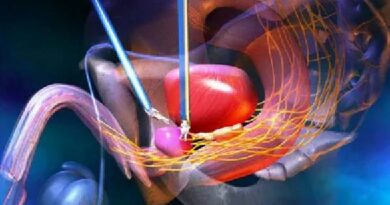Anaerobic Exercise: What Is It? What Are The Benefits?
Being obese is a major challenge for many people across the globe. If you happen to be one and you wish to build muscle while losing weight, then you should consider Anaerobic exercise. Even though the throes you will be subjected to might be much, the results are quick and obvious.
This high-intensity exercise does not need the body to make use of oxygen as an energy source. Rather, they make use of the energy that is available in your muscles. Since this workout does not make use of oxygen, the powerful movements must be very short, about 10 to 15 seconds.
Great examples of anaerobic exercise are heavy weightlifting, high-intensity interval training, and calisthenics. For a workout program to be considered anaerobic, it must be highly intense. This guide will provide a deep insight into what an anaerobic exercise is and its benefits to the body.
Functions of Anaerobic Exercise in the Body
The rigors you are subjected to while engaging in anaerobic exercise cannot be denied. For optimum results, many builders rely on TestoPrime and other steroids. Yet, the benefits that are associated with it are good for the body. Some of these are introduced as follows:
Facilitates weight maintenance
When you engage in anaerobic exercise, you can manage your weight properly. Several studies have shown the effects of high-intensity training on getting rid of excess pounds. While the effects of aerobic exercise on fat loss can be minimal, the impacts of anaerobic exercise can be pronounced.
Boosts power
Anaerobic exercise is widely considered to be beneficial when it comes to increasing your physical power. The intense condition you subject your muscles to will make them adjust better, increasing power in the process.
Increases bone density and strength
There are various anaerobic exercises that you can partake in – including resistance training – which are known to be effective for boosting the strength and density of the bones.
Boosts your lactic acid tolerance
When you don’t make use of oxygen to exercise, the body does not rely on the oxidation of fat for energy. Rather, the exercise is fueled by glucose, which is converted in the muscle to lactic acid through glycolysis. This short burst of energy produced this acid. As a result, regular participation in this type of exercise will get your body used to lactic acid.
How is Anaerobic Exercise Different From Aerobic Exercise?
Unlike aerobic exercise which requires the use of oxygen to oxidize proteins, fats, and carbs in the body as fuel during the workout, anaerobic exercise makes use of the glucose in the muscle as a source of energy. This ensures that aerobic exercise can be readily sustained over a longer period. However, this also hinges on the intensity of the exercise.
When your body cannot make use of energy during anaerobic processes, it relies on the anaerobic conversion of glucose to lactic acid in the muscle. This releases energy. However, the body can only withstand this intense condition for a short period. By putting much strain on the muscle, it builds faster, strengthens bones, and encourages balance.
Take, for instance, long-distance runners can make use of oxygen – however little it is – as they run. This is possible as long as they don’t pick up the pace, ensuring that they can run for a prolonged period. On the other hand, for a sprinter, a short burst is needed with maximum power invested to increase mobility. This naturally subjects them to an anaerobic condition. After all, as the pace of your run increases, it becomes more difficult to breathe. This makes them tire out easily
As a result, the anaerobic threshold separates anaerobic and aerobic exercise, which depends on the intensity of the exercise.




